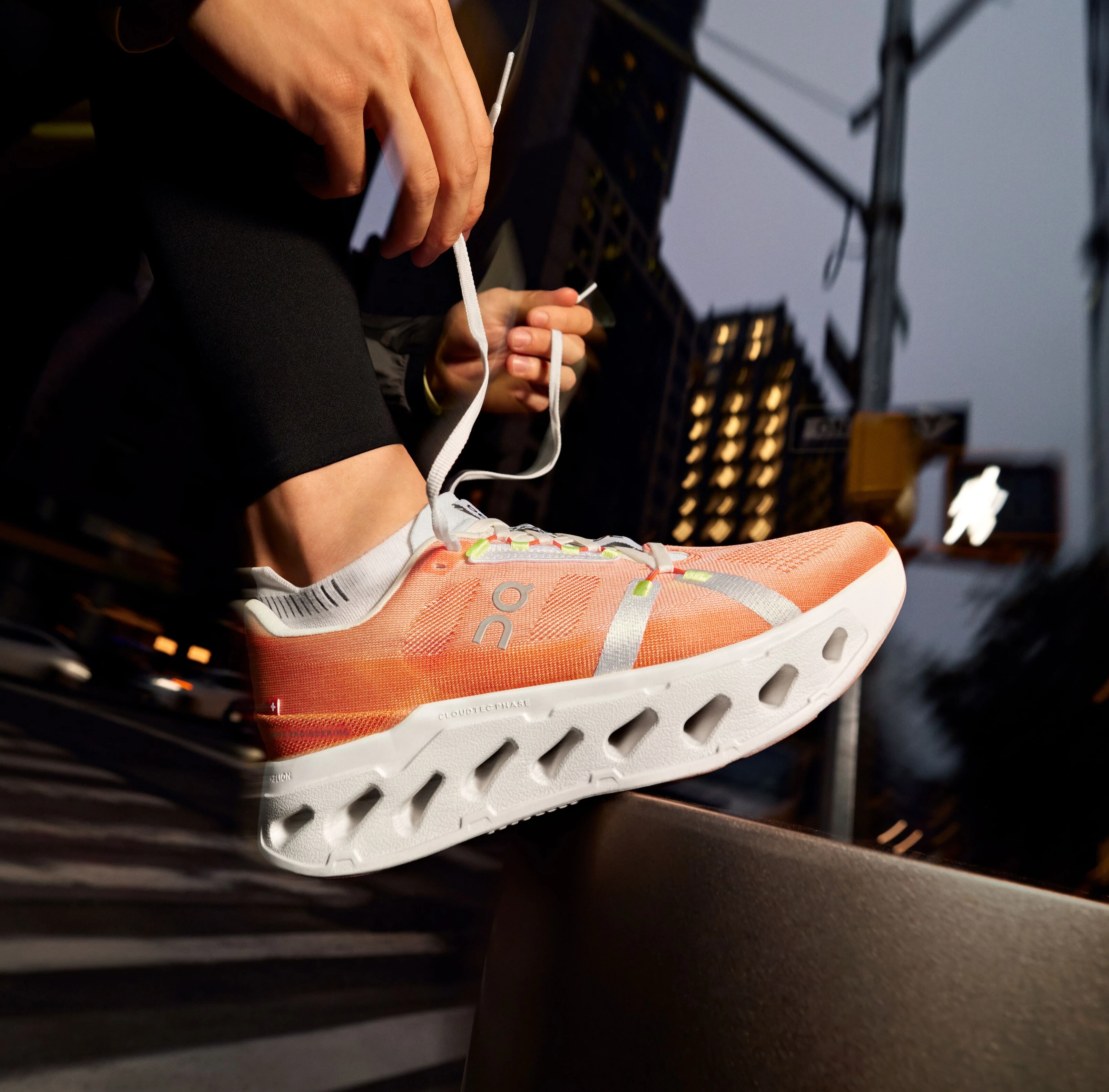

Lace your running shoes the right way with On’s Consumer Engagement Lead, Eugene Burndam. From the Cloud 5 to the Cloud X and more, find the way to lace up that suits you best.
Words by Laura Markwardt. Photography by Anne-Sophie Soudoplatoff.
Your feet are unique and accordingly, there's a shoe lacing style that will suit you best. Find your optimal fit, with expert advice from Eugene Burndam, Consumer Engagement Lead, at the On flagship store in London’s Regent Street. Some of our shoes – such as the Cloud 5 – come with elastic ‘speed lacing’ for a convenient, flexible fit. If you want to replace this lacing with regular laces, then make sure you choose a lacing technique that best supports your movement style. Eugene explains where you should start: “The height of the instep and arch of the foot, combined with the shape of the upper and shoe toe box, determine how much lacing a person needs. As a self-confessed low-to-no arch runner, upping my mileage in a shoe that doesn't provide width can risk foot injury. It can even affect my natural gait if the shoe feels uncomfortable halfway through my training session.”
Loop lacing – one of the six lacing techniques explained below – was Eugene’s solution, “After showing my running shoes to my podiatrist, she provided a constructive way to give more space to my midfoot with loop lacing.”
Loop lacing is one of the most popular ways to lace running shoes. Eugene explains why, “With the loop-lacing system, you're essentially making the shoe more secure on your foot, to prevent slipping or movement, but giving ample room for the mid and forefoot, which allows for the most comfortable, supportive run.”
The more comfortable your run feels, the more enjoyable it is. Dina Weisheit, Sports Science Lead at On, explains that this is safer for you too: “Science proves that keeping people in their natural movement path, is also where they feel the most comfortable. If you have an ill-fitting shoe, you run the risk of foot injuries.” Plus, no one reaches their running flow state wearing uncomfortable shoes that could be laced more supportively. By working with his podiatrist, and thousands of customers with unique running styles in-store, Eugene has an expert overview on the common mistakes people can make when they lace their running shoes. He explains, “It’s important to not starve the forefoot and midfoot area of space when putting running shoes (or any shoes) on. Usually, our first inclination is tying up tighter as opposed to making sure the upper is distributed equally across our feet because we want to feel secure. This is especially important to avoid with new running footwear when the shoe's upper is more rigid – space must be distributed equally to allow the foot to stretch inside.”
The options given here offer the flexibility to make a choice about what best works for you.
A note here that if you’re just at the start of your running journey then before you even lace-up, you need to find your ideal running shoe. Find the On shoe that’s perfect for you with our On Running Shoe Finder tool and experience an entirely new running sensation. You can also check out our FAQs for any other shoe related queries. On's patented CloudTec® sole technology is the only cushioning system which cushions only when you need it, letting you land soft, yet push off hard. Enjoy your run.